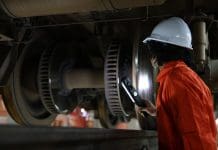The construction skills gap may become a crisis, with 225,000 additional workers needed in four years. Ryan Jones, managing director of SLG Agency and founder of Deconstruction, says the industry needs to work on its image
Image is everything. Well, perhaps not everything, but it is essential. In the case of the construction skills gap, image is detrimental to the sector’s ability to recruit and retain talent, which means the industry can’t provide the country with the essential homes and infrastructure it needs.
It is time for the whole sector to do something about it. While some positive efforts are being made, they often remain isolated and fail to bring about a substantial, industry-wide transformation.
45,000 workers per year
Estimates from the CITB see us needing 225,000 additional workers to meet UK construction demand by 2027 (45,000 workers per year, down from last year’s figure of 53,200). This will take the total to 2.67 million workers in the construction industry by 2027 if projected growth is met.
Despite setting this target long ago, we are still far from achieving it – and that’s a cause for concern. The 2016 Farmer Report predicted a 20-25% decline in the available construction workforce in the coming years.
The skills in demand are across a vast range. The most in-demand skills in the UK construction industry (according to recruiters SSA Group) include quantity surveyors, site engineers, design managers, health and safety advisors and quality assurance managers.
The demand isn’t regional either – the highest demand for construction workers in the UK is in the East and West Midlands, Scotland, Wales and North West England.
The impact of this construction skills gap isn’t only felt by the industry – the work of construction is vital to almost all aspects of our day-to-day lives. As our population grows, the demand for more housing, schools, hospitals, and road and rail infrastructure escalates.
Simultaneously, we face the challenge of an ageing population, which means our societal needs are becoming more complex. The consequences could be disastrous if we don’t have the workforce to help meet these challenges and produce the needed amenities.
Ageing workforce
To compound these issues, construction is also an ageing sector, so a lack of talent retention compounds the lack of new entrants.
The problem shows no signs of slowing, with 94% of bricklayers planning early retirement. Equally disturbing data from RICS reveals that the average age of a surveyor is 59, and they, too, anticipate a shortage of new entrants.
Meanwhile, we remain invisible to the public (save for negative HS2-related headlines), and the potential new entrants we desperately need leave schools and colleges without even considering our sector.
So, the problems are well documented:
- The ageing workforce
- The lack of training
- The lack of diversity
The proposed solutions to these problems around investing in training, promoting diversity, and modernising apprenticeships are all worthwhile – but are unlikely to succeed without changing the industry’s image to make it more initially attractive to potential entrants.
The same Farmer Report mentioned earlier told us that the image of the sector was one of the major things holding it back, and that effort was needed to turn this around; now is the time to take heed of this and tackle the issue head-on.
Dirty, strenuous and difficult
To kick-start this effort and understand our starting point, we surveyed 2,000 public members, and the results were alarming, if not predictable.
Two-thirds of respondents (67%) stated they would never consider working in the construction sector.
Delving deeper into the data, a straightforward narrative emerges. Construction consistently ranked at the bottom or second-to-last when respondents were asked to evaluate sectors based on factors such as prestige, potential earnings, and level of educational attainment required. Words like “dirty,” “strenuous,” and “difficult” were associated with the industry.
Concerning all contractors and sub-contractors, what becomes clear is that the only exposure many members of the public have to the sector is Hi-Vis jackets, holes in roads and delays on your daily commute.
These things are vital shorthand images for construction, but they only represent a fraction of the workforce and the opportunities the sector can offer young people.
To bridge this gap, we must present a different narrative. We need to identify exciting themes that capture their imagination, explore the skills they possess and the things they enjoy, and directly engage with the young people we want to inspire.
We have many incredible aspects to showcase, and many beliefs people hold are misconceptions rather than truths.
This is Deconstruction
So, how do we achieve this? We can follow the successful strategies employed by other sectors. We need to communicate directly with our target audience in a way that resonates with them, using a platform that is not tied to any single company.
We aim to unite stakeholders from across the sector, combining our efforts to showcase the industry’s true potential to those who matter most.
Each year, we will repeat the process of surveying the public, gaining insights into their perceptions of the sector, and actively campaigning to dispel misconceptions.
We want all businesses and stakeholders from across the sector to join us on this; everybody has a part to play if we’re going to turn this thing around and build a better-equipped sector to deliver the housing and infrastructure that this country desperately needs.
Together, we can redefine the construction industry, reshape its image, and ignite the interest of future generations.















I’ve Been in the construction industry for 30 + years .No I’m 53 and really struggling to find some work. The Problem seems these days for older Trades Mens is the Very complex Administration work you have to go through. Most older good Trades men cannot be bothered. All we want to do is earn a living .I’ve got all the appropriate certificates to allow me to work on a Building site but still I,m unemployed. I have Just started a Rail Engineering course a College to gain my PTS Card .The Problem with the Building Trade Has always been funding. I m on my 5th CSCS Card. With which I have always funding my self. I have never been given any PPE ,again always Bought my own weather Self Employed or Directly employed.